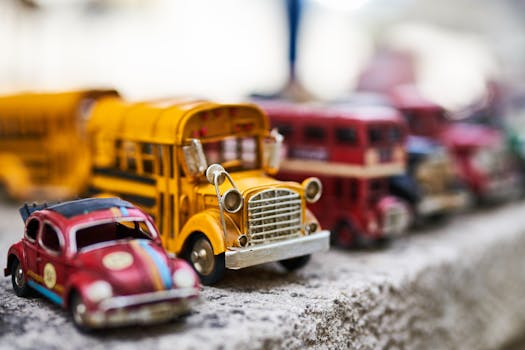Psst! Ever feel like the toy store is a screaming, plastic jungle? Rows upon glorious rows of garish, pre-packaged "educational" gizmos promising to whip your cherub into a pint-sized prodigy? Balderdash, I say! A two-year-old's brain isn't a machine to be programmed; it's a wild, untamed landscape begging to be explored.
Forget those single-use, pre-determined playthings! We're talking about tools that ignite the imagination, not stifle it. A meticulously molded plastic spaceship? A brief, pre-ordained burst of amusement, then – poof! Gone. But a basket of intriguing odds and ends? That, my friends, is a universe in miniature, ripe for the plucking. It’s a boundless landscape for creative construction! There's the real enchantment, the heart of true learning.
Let's unleash the power of open-ended play:
-
Nature's Toolkit: Think of it as a "loose parts" scavenger hunt! Pebbles, smooth as river stones, gnarled bits of wood, pinecones – a veritable buffet for developing spatial reasoning and imaginative construction. Forget pre-built towers; this is about building the very fabric of invention!
-
Fabric Fantasia: Scraps of brightly hued cloth. Sensory bonanzas! Imagine the forts! The costumes! And, with some child-safe needles (always supervised, of course!), the budding skills of a master seamstress or tailor.
-
Simple, but Stunning: Ditch the fancy kits. Large, chunky wooden blocks? Stacking cups of vibrant colors? These aren't just toys; they're problem-solving playgrounds in disguise. Fine motor skills? Spatial awareness? Check and checkmate!
-
Play-Doh Power (Homemade is Best!): Squish, roll, and shape! This isn't just finger painting with a texture upgrade; it's a lesson in geometry, size, and shape disguised as pure, unadulterated fun. The opportunities are truly limitless. And it’s utterly, gloriously tactile!
-
Water Works (The Splashtastic Science Lab!): Filling, emptying, pouring, splashing – it's a sensory symphony! It's also a foundational science experiment, all wrapped up in the joys of watery mayhem. This is where scientific inquiry takes root in giggles and splashes.
These simple, unassuming items pack a far mightier punch than any battery-operated, pre-programmed marvel. They're the bedrock of future success, nurturing creativity, sharp thinking, and problem-solving abilities far more valuable than reciting the alphabet at two. So, ditch the flashy, fleeting fun and embrace the open-ended adventure!
Forget rote memorization, that's so yesterday! A two-year-old's brain isn't a passive sponge, guzzling facts like a thirsty camel. No, my friends, it's a vibrant, burgeoning jungle, ripe for exploration! We're not stuffing in information; we're cultivating a fertile ecosystem of learning, where knowledge sprouts organically. It's the journey, the exhilarating expedition, that truly matters.
Picture this: mastering a bicycle isn't about memorizing Newtonian physics – that's for the eggheads! – it's about the glorious, wobbly, exhilarating doing. That's the essence of learning; it's empowering, it's joyful, it's downright electrifying! And the sooner we unleash this inner scientist in our little ones, the better. The benefits? They're colossal, like a skyscraper made of marshmallows!
Open-ended play? It's a wonderland of development. First, consider this: tackling oddly-shaped blocks – that’s problem-solving in its purest, most ingenious form. Suddenly, spatial reasoning and puzzle-solving abilities blossom, far surpassing the achievements of perfectly-matched, pre-fab toys. It’s like a secret code to a brilliant mind, cracked wide open!
Then there's the artistry, the imaginative explosions! Open-ended play lets them become the auteurs of their own epic sagas. They’re the playwrights, the stage directors, the Oscar-winning actors of their very own theatrical masterpiece. The creativity bursts forth, a veritable supernova of imagination.
Beyond that, consider the deftness of their little fingers! Building, manipulating, and constructing; these aren't just activities, they're brain-boosting exercises for both mind and body! Hand-eye coordination blooms; fine motor skills get a serious workout. It’s physical therapy for the brain, as they create mini-masterpieces.
Moreover, language blossoms like a thousand tiny flowers. Imaginative play? It's a language-learning bonanza! Storytelling, role-playing, and lively communication become second nature. Their vocabularies expand, and their linguistic skills soar.
Finally, emotional intelligence emerges, a powerful, resilient inner compass. Whether solo or with pals, children learn to navigate conflicts, negotiate peace treaties, and express their emotions without blowing a gasket. This breeds confidence, compassion, and a whole heap of resilience.
Crucially, though, open-ended play isn’t about letting kids run amok like a pack of playful puppies! It's about providing a thoughtfully chosen playground that ignites curiosity and unleashes their inner potential. Guide them, yes, but let them chart their own course. Let their genius shine! Trust the process; it’s magical! For more insights into maximizing a child's learning potential, check out some relevant source on child development. Understanding the neuroscience of learning can greatly enhance a child's development, as explored in another source on child development and neuroscience. And for parents navigating the complexities of the educational system, resources like a reputable parenting website or organization can be invaluable. Remember, fostering a love of learning is crucial, and for further strategies, consider reading The Educator's Anti-Handbook: Rebellious Strategies for Thriving in the Classroom. Finally, to help guide your child's future educational path, researching Post-Secondary Education: Is It REALLY Worth the Price Tag? A Cost-Benefit Analysis You Won't Find Anywhere Else is highly recommended.
